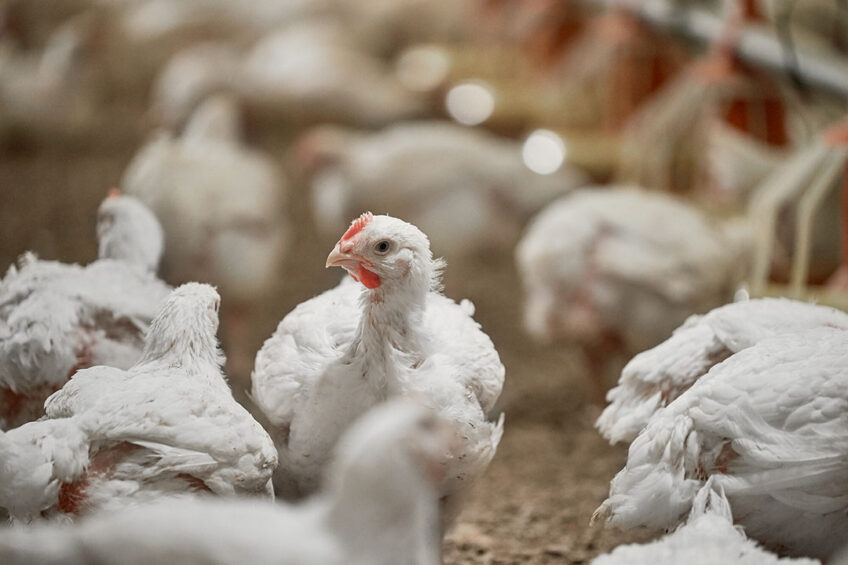Improve protein digestibility for health and performance

Undigested protein is not only costly in terms of wasted resource, it is detrimental to gut health. Including a protease in feed strategies proves successful to tackle this complex issue and deliver positive results.
Dietary protein is one of the most variable nutrients in terms of digestibility. Although the issue is commonly associated with cheaper feed ingredients, even premium soybean meals, which are considered a high-quality protein option, can be affected due to differences in harvest conditions, processing parameters and country of origin. In fact, up to 20% of protein is known to escape digestion and pass through the bird as waste. This not only impacts formulation costs, it also has serious implications for the health and development of the bird and can lead to further increases in production costs.

This is primarily because when high fractions of undigested protein reach the hind gut, it acts as a substrate (food); causing non-beneficial microorganisms to flourish and reducing gut health as a result. In other words, it creates an unfavourable nutribiotic state in the bird; where the interaction between the 3 pillars of nutrition, the microbiome and the gut and immune function in the gastrointestinal tract is out of balance. Feed conversion and nutrient absorption are reduced, while susceptibility to disease is increased; meaning both the performance and welfare of the animal are compromised.
Negative effect on microbiome
Studies have shown that higher levels of undigested crude protein negatively affect microbial communities in the distal part of the gastrointestinal tract. Of particular concern is the fact that an increase in dietary protein will result in a corresponding rise in levels of C. perfringens colonies – causative agents for necrotic enteritis – in the distal part of the intestinal tract. The goal for producers, therefore, is to implement an effective feed strategy that boosts protein digestibility – irrespective of the variability of the source – and prevents a suboptimal outcome. So rather than allowing conditions in the gut to develop that are detrimental to the animal’s health, this nutritional intervention will actively help to create a favourable nutribiotic state and deliver the related performance benefits. This is the premise behind DuPont’s broad spectrum protease. It contains a single-activity enzyme that overcomes the limitations of the animal’s endogenous proteases to improve digestion and enhance gut health. Crucially, it is supported by research showing its efficacy and positive role in the context of nutribiosis. So how does it work?
Protease in action
With the ability to cleave a peptide chain at almost any position, Axtra Pro ensures valuable amino acids are made available for muscle deposition and growth. Trials have shown it can improve the amino acid digestibility of feed ingredients by 12% in birds aged up to 21 days fed a corn/soybean meal diet, and by an average of 2.8% in broilers aged 25-34 days fed a corn/meat and bone meal diet. Significant digestibility improvements are recorded for all or most amino acids, even in the upper age range. This action reduces the level of undigested protein reaching the hind gut, which in turn means that less substrate is available for potentially non-beneficial bacteria. In this way, this protease indirectly inhibits the growth of non-beneficial microorganisms, as demonstrated by its application in a number of different commercial settings. In terms of C. perfringens, the addition of this consistent product to feed formulations results in a reduction in colony growth of 87% in broilers and 97% in turkeys. (Figure 1). While Avian Pathogenic E. Coli (APEC) populations have also been shown to be inhibited following supplementation with DuPont’s protease – recording a corresponding reduction of 93% and 96%, respectively.
Protease for a healthier gut
With healthier conditions in the gut, less energy needs to be spent on fighting health challenges and it can instead be redirected to support the performance of the bird. A positive outcome which delivers measurable performance benefits. One clear advantage is that production standards are maintained, even under challenged conditions. This was demonstrated by a study carried out across 2 turkey farms, in which the broad spectrum protease was used in the feed formulation for 12 weeks. During this period, one operation (Farm B) recorded an outbreak of cellulitis; a highly infectious, potentially fatal condition, that is most commonly caused by clostridial bacteria. In this challenged environment, those birds receiving feed supplemented with the product recorded a 12% improvement in liveability parameters. (Figure 2). So, although the use of protease cannot be said to directly affect liveability under normal circumstances – as demonstrated by the other (unchallenged) treatment group in the study – it is proven to be a valuable asset during unpredictable times of challenge. In addition, thanks to its ability to improve energetic efficiency, Axtra Pro supplementation has an equally positive impact on wider performance parameters; boosting both FCR and bodyweight gain.
Wider benefits
Beyond the immediate concerns relating to gut health and performance, it is also worth noting that improving protein digestibility through protease supplementation helps to address the economic and environmental issues relating to the use of dietary protein in feed formulations. As protein is one of the most expensive nutrients in poultry diets, reducing the amount of crude protein in the formulation will automatically benefit the bottom line. Which means that by decreasing undigested protein fractions, producers are able to achieve amino acid requirements with lower levels of crude protein, without compromising performance parameters. It also allows much greater flexibility in formulations by providing an effective tool to deal with variability in raw materials. This allows the use of alternative, lower cost protein sources and reduces reliance on high cost soybean meals. Benefits which not only support commercial efficiency, but also help to ease increasing demand on natural resources.
Author:
Tinke Stormink, DuPont Animal Nutrition
Join 13,000+ subscribers
Subscribe to our newsletter to stay updated about all the need-to-know content in the dairy sector, two times a week.






